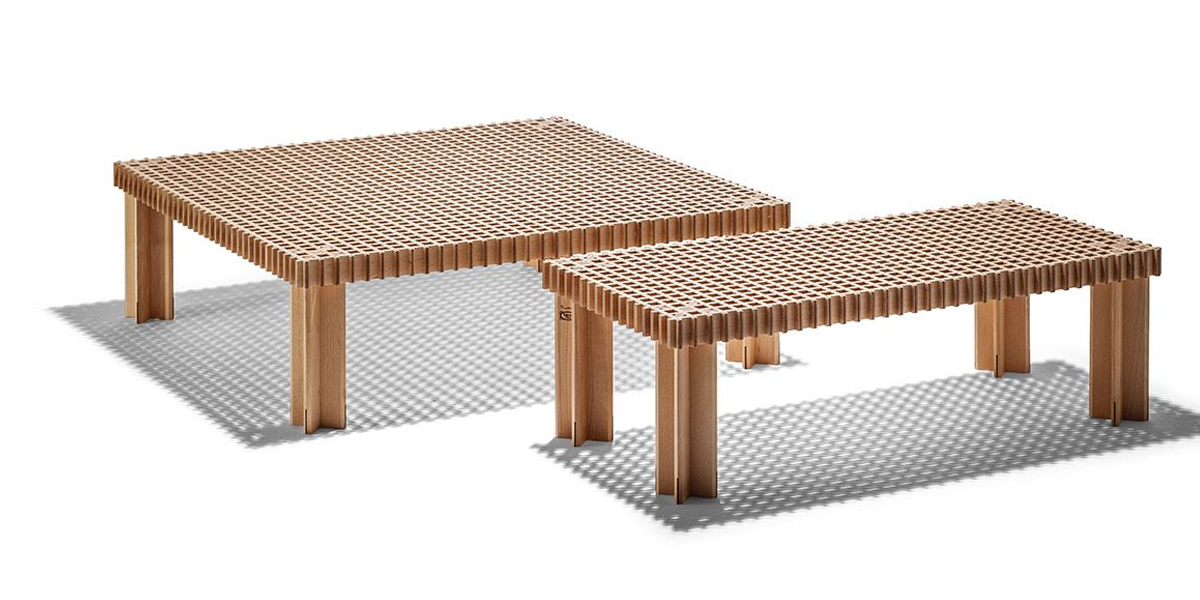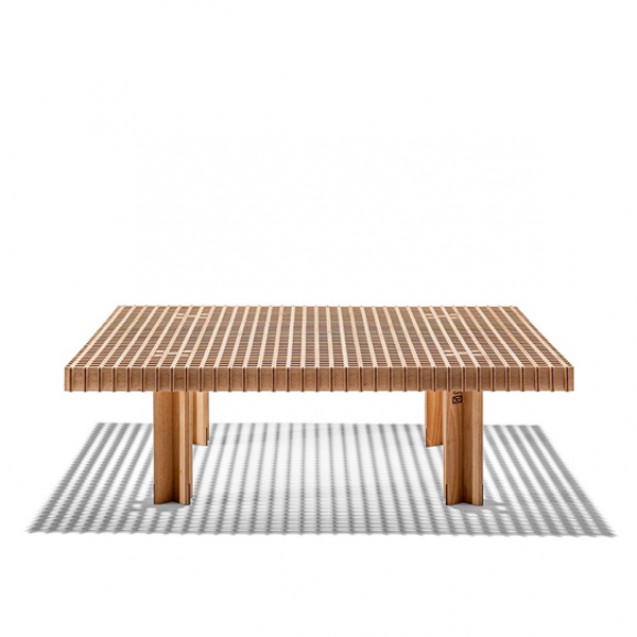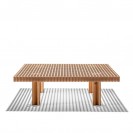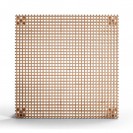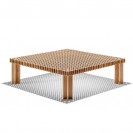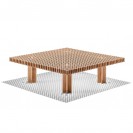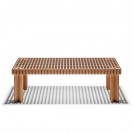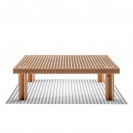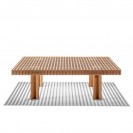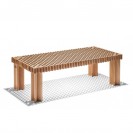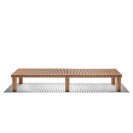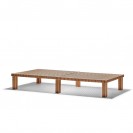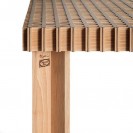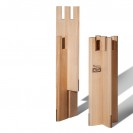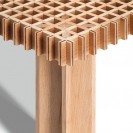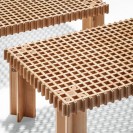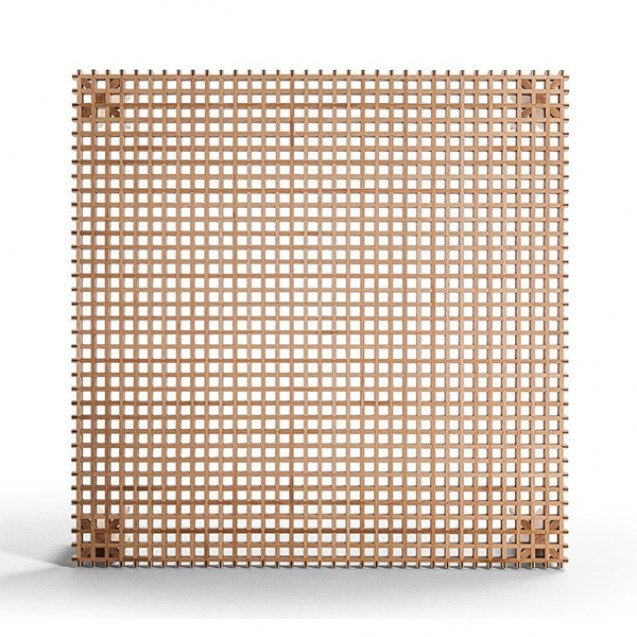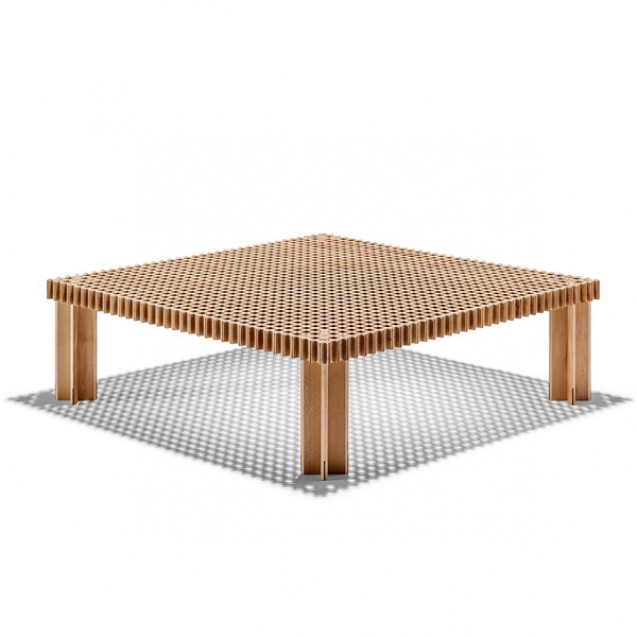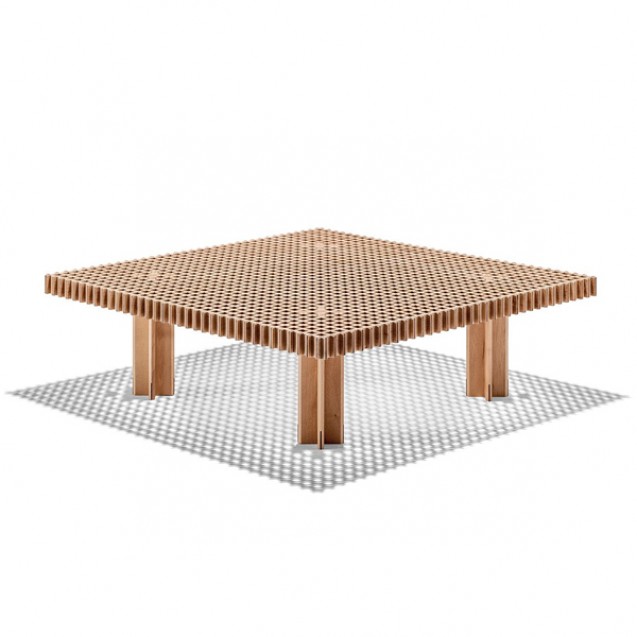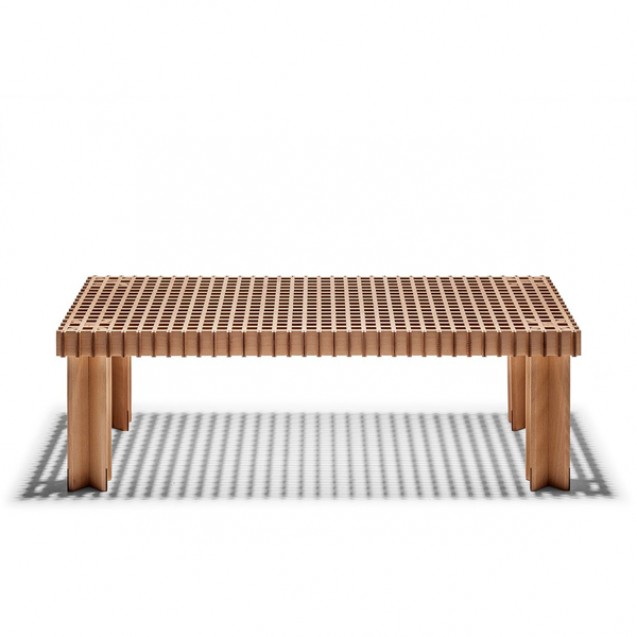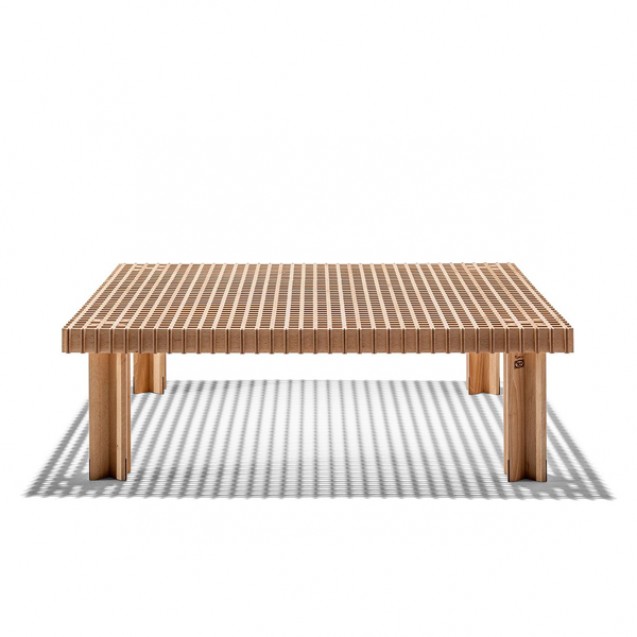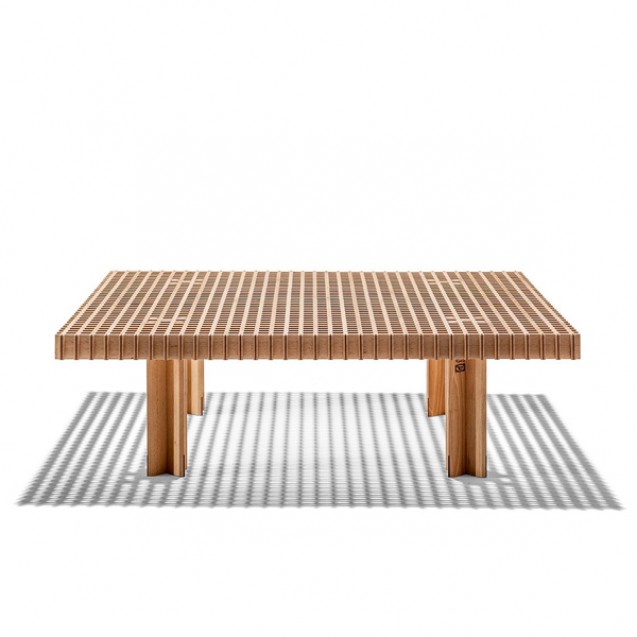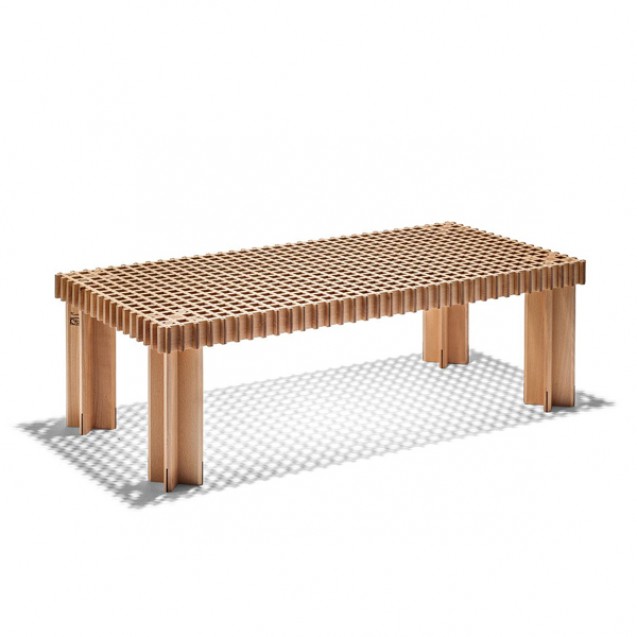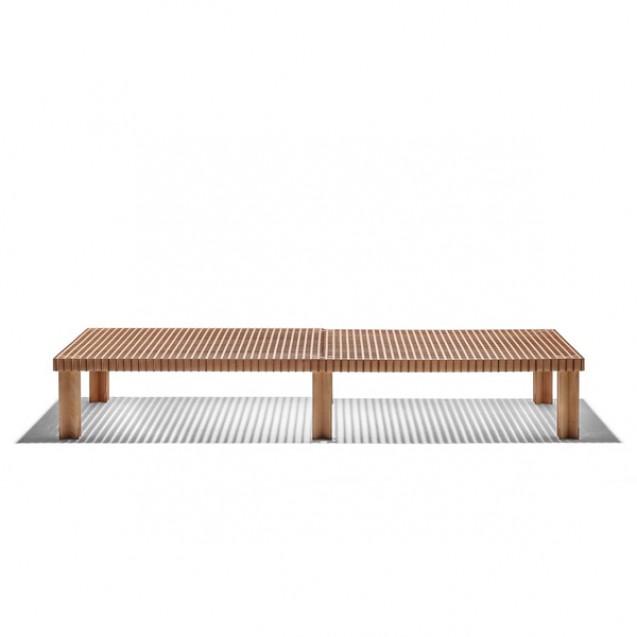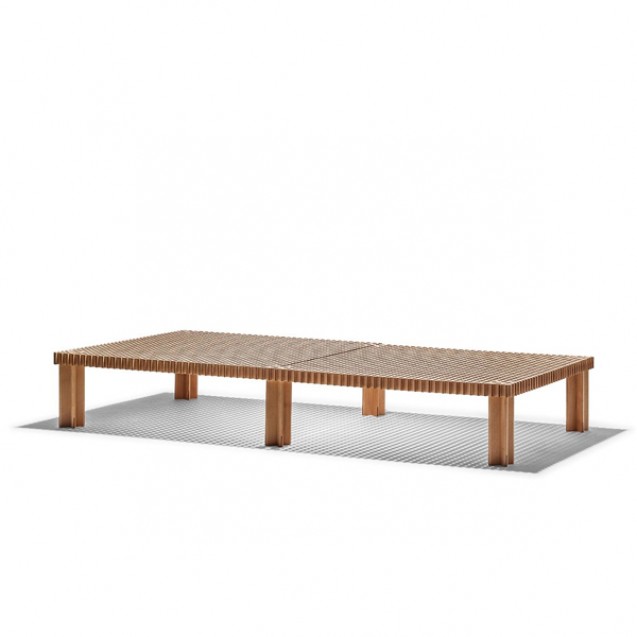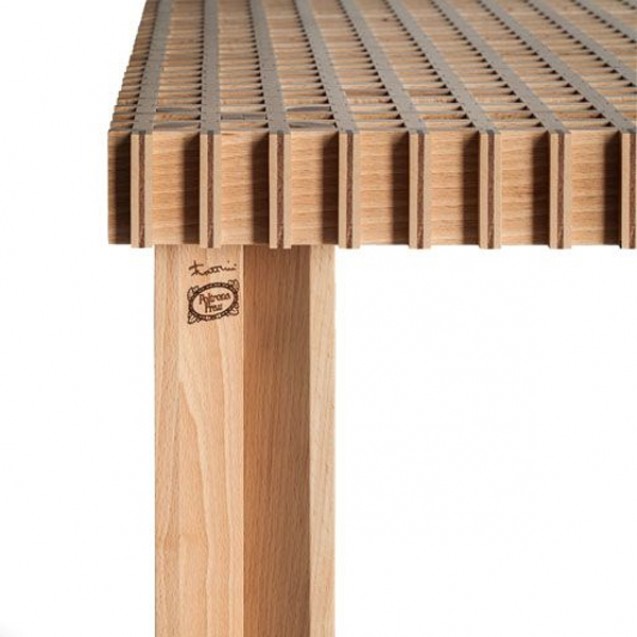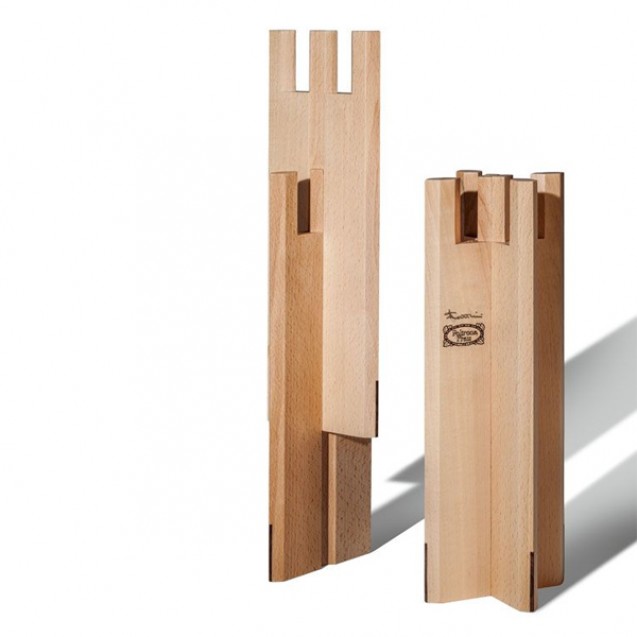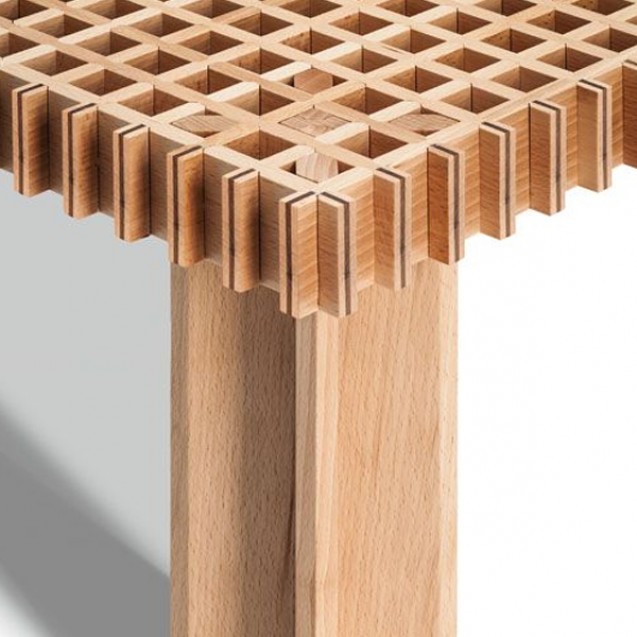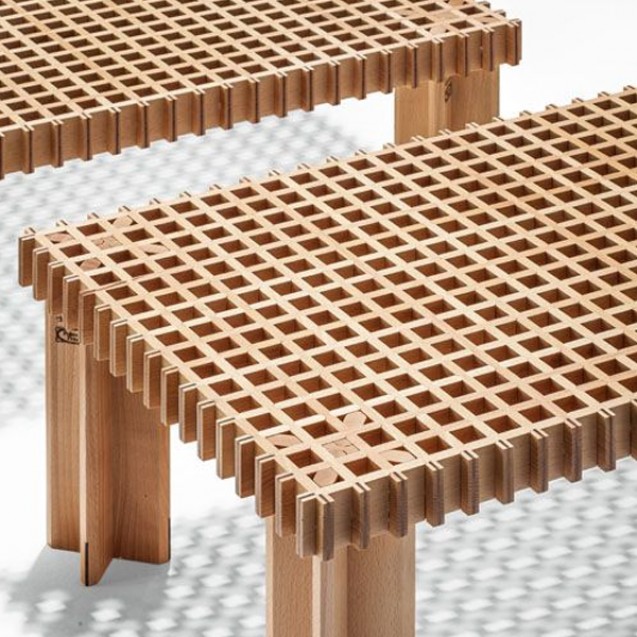Kyoto
Understated and refined,
the Kyoto table by architect and designer Gianfranco
Frattini is the perfect blend of design vision and master craftsmanship.
In the early 70s, during a trip to Japan to study the work of the local
craftsmen, Gianfranco Frattini visited the craft workshops of Kyoto together
with expert carpenter Pierluigi Ghianda, who would become his friend and
collaborator. Inspired by the processing techniques and aesthetics of these
places, the designer came up with the idea for the joint that would form the
basis of the table of the same name, production of which began in 1974. Kyoto
immediately became synonymous with a concept of understatement which, as in the
best Italian design tradition, combines a brilliant idea with impeccable
execution. In the Kyoto table the construction concept becomes the object
itself. The absence of decorative elements exalts the beauty of the raw
material - the Canaletto walnut inserts have a precise strengthening function -
requiring great technical ability and care as well as an in-depth knowledge of
the material. Revisited by Poltrona Frau with complete respect for
the original project, the Kyoto table reflects the skills and expertise
of a new wave of artisans, heirs of the rich Italian wood crafting tradition,
and stands alongside Albero and Turner as an example of high-end craftsmanship.
The Kyoto table forms part of the permanent collection of the Design
Museum at the Milan Triennale. The Kyoto table is available in the square 102
cm version with height of 32 cm, or in the 102x49 cm version, also 32 cm high.
The surface and legs are in Extra light solid beech wood with solid Canaletto
walnut inserts at the end of the boards that make up the top. The wooden boards
are connected with 45° joints that form a square pattern. Slide-off
counterpoise legs that can be positioned as desired. All surfaces are treated
with a protective transparent varnish. The Poltrona Frau logo and the designer’s
signature are laser engraved on one of the faces of the leg supports.
| About Designer | |
|---|---|
Gianfranco Frattini |
Gianfranco Frattini was born
in Padua on 15 May 1926. He graduated from Milan Polytechnic with a degree in
Architecture in 1953 and joined Gio Ponti's studio. As early as 1954, thanks to
Ponti, he began working with Cesare Cassina, who would always remain an
important figurehead for him.He was one of the founders of ADI and was involved
in the management of the Triennale di Milano on several occasions. He opened
his own design studio, initially with Franco Bettonica, in Via Lanzone, Milan.
He worked with numerous companies in the field of furniture and lighting design
including Bernini, Arteluce, Knoll and Artemide, for whom he and Livio
Castiglioni designed the “Boalum” floor lamp, a true masterpiece and, above all
else, an innovation in terms of product type.
Frattini's relationship with
Pierluigi Ghianda, a cabinet maker from Bovisio Masciago, was also extremely
important. Beyond the human aspect, this relationship exemplified his passion
for working at close quarters with craftsmen, always attentive to the quality
of manufacturing and the design stories. Wood was without doubt Frattini's
preferred material. Some of his interior designs, another professional field in
which Frattini has left a significant legacy, formed the backdrop for several
of Milan's trendiest social venues in the early 1960s, particularly the Stork
Club and the St. Andrews restaurant. His designs in Portofino, Capri and
the interiors of the Hilton hotel in Tokyo are also particularly memorable. His
work was referenced at the Compasso d’Oro awards numerous times, and he was
also a winner of the Triennale di Milano Medaglie and Gran Premio
awards. Domus magazine regularly published his work. In 1988 Pier Carlo
Santini dedicated an important monograph to him. Gianfranco Frattini died in
Milan on 6 April 2004. In 2007 Giuliana Gramigna and Federica Monetti wrote
Gianfranco Frattini: architetto d’interni e designer (Gianfranco Frattini:
interior architect and designer) for Franco Angeli. His products are displayed
in the permanent collections of the biggest design and decorative art museums
in the world. |
